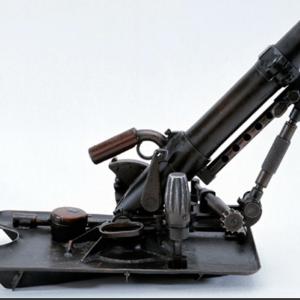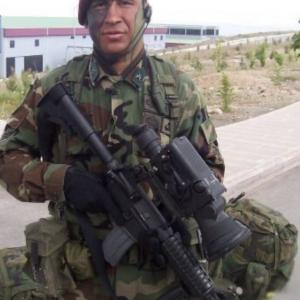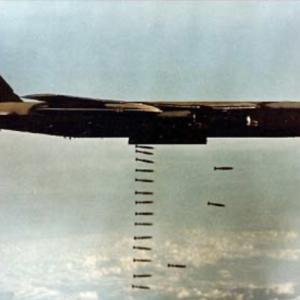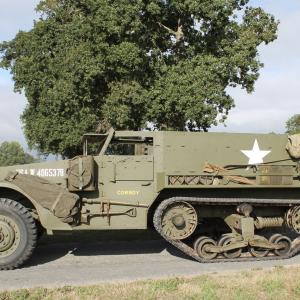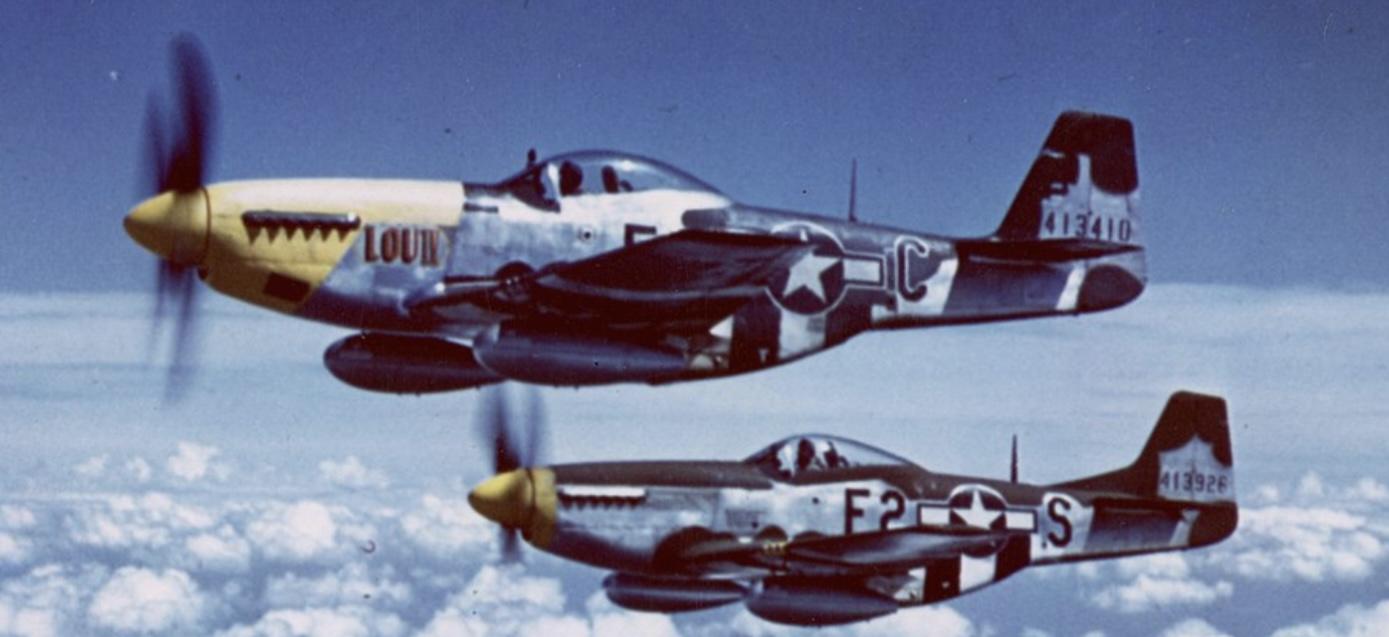
Mustang P-51 plane
The critical air battles fought between the German Luftwaffe (air force) and the Allied air forces during World War II, particularly between 1943 and 1944, marked a key turning point in the European theater of war, with the P-51 Mustang playing a pivotal role in securing Allied air superiority. As Allied bombing raids into Nazi-occupied Europe intensified, the Luftwaffe became a significant threat to Allied bombers, and the Mustang's involvement in these engagements was essential in tipping the scales in favor of the Allies.
The Problem: Bombers Without Escort
At the start of the Allied daylight bombing raids, bombers typically operated without fighter escorts due to the long distances involved. The bombers were heavily defended by their own gunners, but this was often insufficient to ward off the skilled and well-equipped German fighters. The Luftwaffe was able to wreak havoc on the bombers, forcing the Allies to re-evaluate their tactics and methods.
In response, the Allies sought a solution to protect the bombers during their raids. The solution was long-range fighter escorts that could accompany the bombers and protect them from German interceptors. This is where the P-51 Mustang became a game-changer.
The Role of the P-51 Mustang in the Fight Against the Luftwaffe
By 1943, the United States Army Air Force (USAAF) began to recognize the importance of escort fighters that could protect bombers deep into enemy territory. The P-51 Mustang was brought into the spotlight as the ideal solution. Initially, the Mustang was equipped with the Allison V-1710 engine, which was somewhat limited in its high-altitude performance. However, after the aircraft was fitted with the Rolls-Royce Merlin engine—suggested by the British—its performance dramatically improved. The Merlin engine gave the P-51 Mustang unmatched altitude capability, allowing it to compete with the best of the Luftwaffe's interceptors, such as the Bf 109 and the Fw 190.
The P-51 Mustang’s primary role was to escort bombers on long-range missions, ensuring that they could reach their targets without suffering heavy losses to enemy interceptors. With a range of over 1,000 miles, the Mustang could accompany the bombers into the heart of Germany, something no other Allied fighter could do at the time.
As the Allies began using the P-51 Mustang as their primary long-range escort fighter, the tide began to turn in the air war over Europe. The Mustang’s speed, agility, and firepower made it a deadly adversary to the Luftwaffe. Equipped with six .50 caliber machine guns, it was capable of inflicting heavy damage on enemy aircraft, and its long range meant that it could engage the Luftwaffe deep in German territory, forcing them to fight on the defensive.
Key Engagements with the Luftwaffe
The Mustang’s arrival on the scene had an immediate impact on air battles over Europe, especially in 1944. Notable engagements took place during the Battle of Normandy, the air campaign leading up to D-Day, and the Bombing of Germany’s oil refineries.
The Schweinfurt-Regensburg Mission (August 17, 1943)
One of the key moments that highlighted the need for long-range fighter escorts occurred during the Schweinfurt-Regensburg mission in August 1943. During this mission, 376 B-17 bombers were tasked with bombing ball-bearing factories in Schweinfurt, Germany. Despite the heavy defenses of the Luftwaffe, the bombers were able to reach their target, but they suffered severe losses, with 60 bombers shot down and many more damaged.
The losses were devastating, and the mission underscored the inadequacy of Allied fighter escorts at that time. The bombers were unable to reach the target with sufficient protection, and the Luftwaffe’s fighters wreaked havoc on the formation. This event was one of the driving forces behind the push for more effective fighter escorts, leading to the eventual introduction of the P-51 Mustang into the fight.
The D-Day Invasion and Air Superiority
As the Allied forces prepared for Operation Overlord (the invasion of Normandy in June 1944), securing air superiority was critical. The P-51 Mustang played an instrumental role in ensuring the success of D-Day. For the first time in the war, American bombers were able to operate deep into Germany and hit targets of strategic importance without suffering heavy losses to enemy interceptors.
The Mustang’s long range allowed it to provide cover for bombers flying over Normandy and into Germany. During the Normandy landings and the subsequent campaigns in France, the P-51 was used not only as a fighter escort but also as a ground-attack aircraft, targeting German supply lines, artillery positions, and enemy airfields.
The Destruction of the Luftwaffe’s Fighter Force
The P-51 Mustang’s presence was devastating for the Luftwaffe. The Mustang’s ability to operate over long distances and its effectiveness in combat meant that the Luftwaffe's once-formidable fighter force was being gradually worn down. As Allied bombing raids continued, the Luftwaffe could not protect its airspace, and the aircraft they deployed to intercept Allied bombers were often outmatched by the Mustang.
One of the most significant consequences of the P-51’s involvement was the steady destruction of the Luftwaffe's fighter strength. The Luftwaffe lost many experienced pilots, and their aircraft were increasingly worn out. By the time of the air battles over the Rhine in early 1945, the Luftwaffe was in a weakened state, and its ability to mount a meaningful defense against the Allies was severely diminished.
Impact on the Outcome of the War
The P-51 Mustang’s ability to turn the tide in favor of the Allies was clear by mid-1944. As the Luftwaffe’s strength dwindled, Allied bombers were able to strike with far less resistance. The introduction of long-range fighter escorts meant that bombers could hit industrial and military targets deep inside Germany, crippling Nazi Germany’s ability to wage war. By the end of the war, the Luftwaffe had been effectively neutralized, and air superiority had shifted decisively to the Allies.
In the broader strategic sense, the Luftwaffe’s weakening marked the beginning of the end for the Third Reich. With the Luftwaffe decimated and no longer able to provide adequate defense, the Allied forces were able to carry out their bombing campaigns with far greater success, severely weakening Germany’s infrastructure and morale.
The P-51 Mustang’s role in these air engagements was a key turning point in the Allied victory in Europe. The Mustang’s combination of speed, firepower, and range allowed it to escort bombers safely into enemy territory, eliminate enemy fighters, and protect the skies over Europe, ultimately leading to the defeat of the Luftwaffe and paving the way for the Allied victory in World War II.

